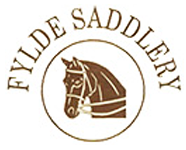In the equestrian world, there are two schools of thought regarding reins. On the one hand, some use bridles as aids, while others consider them useless and annoying to the horse. As a result, it is often difficult to form an opinion on this subject. It must be remembered that the rider or rider often does not know how to use the handles correctly and does not place them correctly, which makes the horse very uncomfortable.
Overall, a properly fitted bridle is not bad, especially for inexperienced riders. Handlebars are a great support for riders who struggle to find the right balance in the saddle and as a result, struggle to ride correctly. You also have to be aware of your hand position and the surrounding environment when you ride; not everyone can do that simultaneously. For inexperienced individuals, a secondary rein can provide additional support. This will help you achieve the correct posture without much difficulty.
Objective: riding without auxiliary reins
The goal is to be able to ride without restrictions. In general, it’s a good idea to avoid getting hung up on these kinds of accessories and learn to drive without them. Bridles must be safe and functional on the road, allowing the horse to quickly and easily understand subtle signals.
Your reins should be comfortable. If your reins are too long to carry around, or just plain uncomfortable, you tend to cut your road trip short, and if they look good on you, you can relax in the saddle and enjoy the long journey.
Your horse adapts to how you hold and direct the reins. When moving at a relaxed pace, he appreciates long reins to give him room to move. At the same time, when accelerating, you must be able to easily shorten the reins to lift the horse and give more direct signals when necessary.
Fylde Saddlery explains the quality, types and accessories of handlebars. We can tell you how to attach the bridle to the bit best and how to put the bridle on your horse. Then we will also give you safety tips for connecting to the ground.
Extra handlebars suitable for inexperienced riders/riders
There are many types of bridles, each with different properties and characteristics. In this blog, we will introduce two types ideal for those who have recently entered the world of riding.
Side reins
These auxiliary handles are mounted left and right between the bit ring and the saddle collar. The bridle must always be level when the horse walks with its head in the correct position. They must be placed so the horse can stay caught up vertically when properly crouched.
With these bridles, beginners can focus on sitting while showing the horse how to position. However, it is necessary to ensure that they are properly secured. These grips are suitable for beginners in roping and first-group riding lessons. It can be helpful if you need to become more familiar with horses.
German reins
These types of reins are very popular. Help beginners who already have control of the side reins but need support in front because the horse’s hands still need to be correctly oriented. These bridles are long and can also be used for roping as they allow the horse to reach a certain depth.
The German bridle must be attached if the bridle and saddle are already attached. To attach these reins correctly, the brace must be partially tightened. It should be threaded around the neck, hanging on the other side.
With the Germans in the middle, the Germans could be positioned in three ways. It can be placed at three heights (top, middle or bottom between the hands). Hold the finish line by pulling the reins straight across without twisting them. It is inserted between the bridle and bridle through the bit ring on the outside and is attached to the horse’s body. Unlike the first type where the bridle is attached to the saddle ring, the bridle is attached to the top bar.

